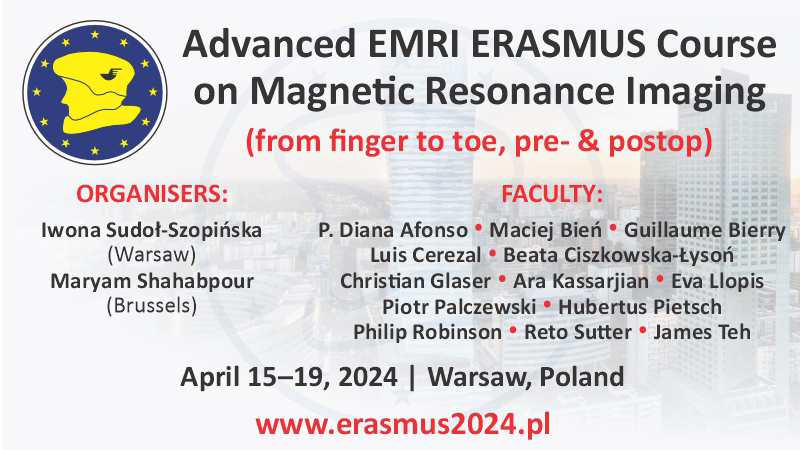Ultrasound shear wave elastography of the anterior talofibular and calcaneofibular ligaments in healthy subjects
Lana H. Gimber1, L. Daniel Latt2, Chelsea Caruso3, Andres A. Nuncio Zuniga4, Elizabeth A. Krupinski5, Andrea S. Klauser6, Mihra S. Taljanovic3
 Affiliation and address for correspondence
Affiliation and address for correspondenceAim of study: Most sprained lateral ankle ligaments heal uneventfully, but in some cases the ligament’s elastic function is not restored, leading to chronic ankle instability. Ultrasound shear wave elastography can be used to quantify the elasticity of musculoskeletal soft tissues; it may serve as a test of ankle ligament function during healing to potentially help differentiate normal from ineffective healing. The purpose of this study was to determine baseline shear wave velocity values for the lateral ankle ligaments in healthy male subjects, and to assess inter-observer reliability. Material and methods: Forty-six ankles in 23 healthy male subjects aged 20–40 years underwent shear wave elastography of the lateral ankle ligaments performed by two musculoskeletal radiologists. Each ligament was evaluated three times with the ankle relaxed by both examiners, and under stress by a single examiner. Mean shear wave velocity values were compared for each ligament by each examiner. Inter-observer agreement was evaluated. Results: The mean shear wave velocity at rest for the anterior talofibular ligament was 2.09 ± 0.3 (range 1.41–3.17); and for the calcaneofibular ligament 1.99 ± 0.36 (range 1.29–2.88). Good inter-observer agreement was found for the anterior talofibular ligament and calcaneofibular ligament shear wave velocity measurements with the ankle in resting position. There was a significant difference in mean shear wave velocities between rest and stressed conditions for both anterior talofibular ligament (2.09 m/s vs 3.21 m/s; p <0.001) and calcaneofibular ligament (1.99 m/s vs 3.42 m/s; p <0.0001). Conclusion: Shear wave elastography shows promise as a reproducible method to quantify ankle ligament stiffness. This study reveals that shear waves velocities of the normal lateral ankle ligaments increased with applied stress compared to the resting state.






